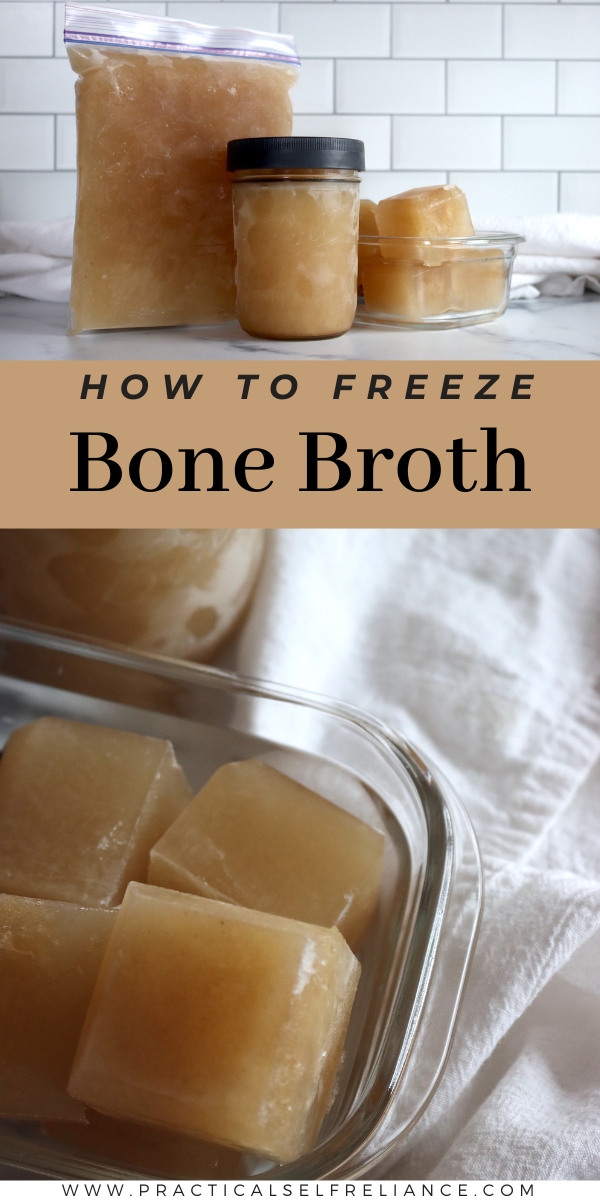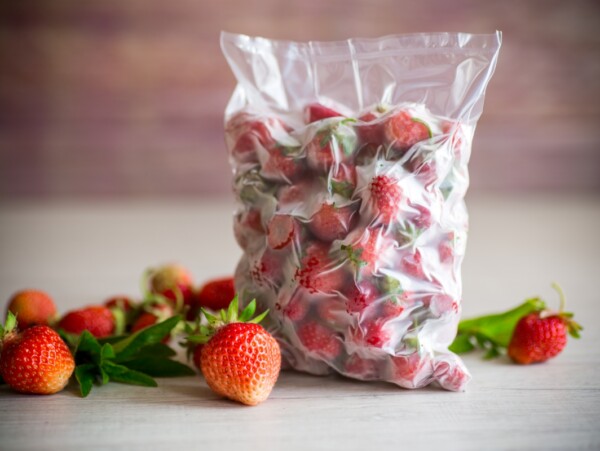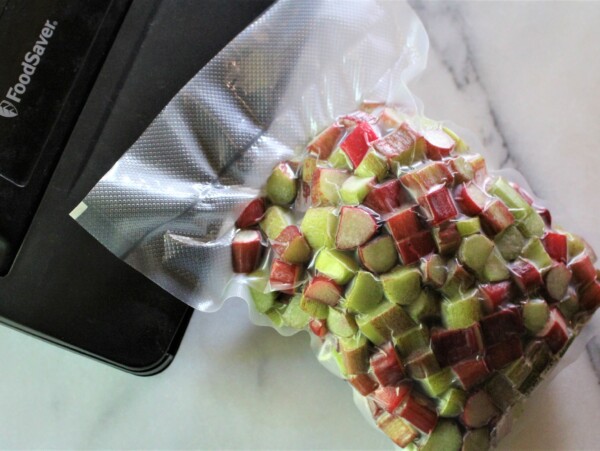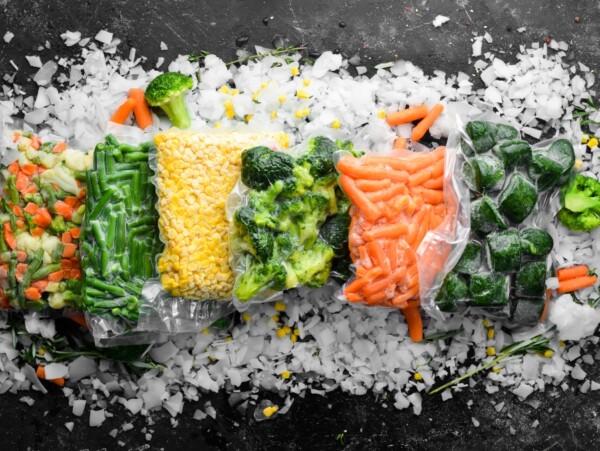Affiliate disclosure: This post may contain affiliate links. Please see our Privacy Policy.
Freezing bone broth from chicken, turkey, beef, lamb, or other types is simple, and it’s a great way to preserve nourishing, nutrient-rich bone broth at home without special equipment.
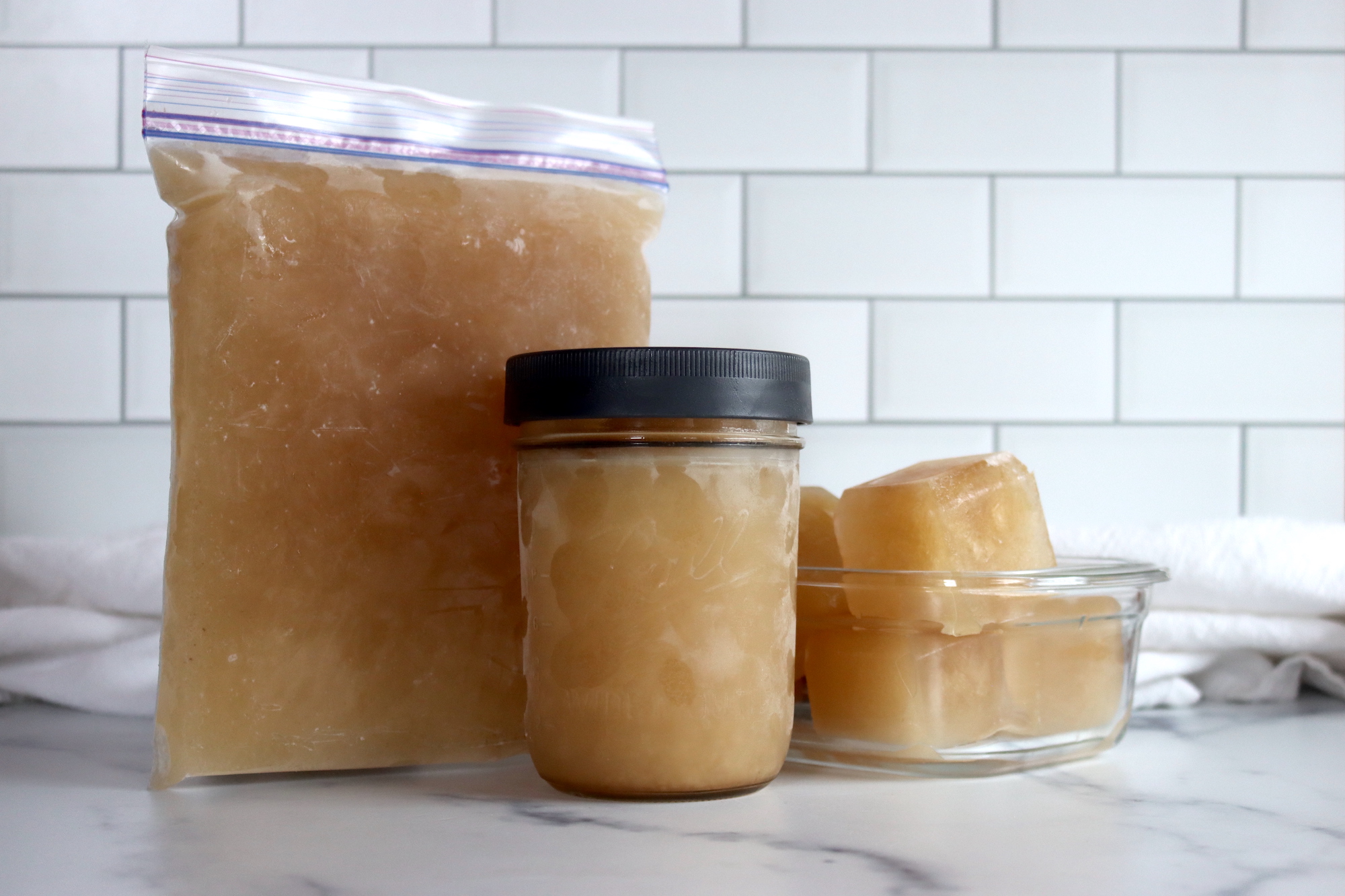
At this point, most people know about the benefits of bone broth, and there are countless online retailers that will sell you high-quality broth…but at a high price. When homemade broth can be made for pennies a quart, with ingredients that would often otherwise be thrown out or composted, making bone broth at home just makes good sense.
The problem is, bone broth can be hard to store.
Case in point…the Black Friday text I got from my sister this year, asking if she could water bath can bone broth in a stock pot. The answer is no, sadly.
Bone broth needs pressure canning if you want to preserve it at room temperature (just like any other meat/vegetable product). The only things you can put in a simple water bath canner are acidic jams, jellies, and pickles.
While you can water bath can a batch of homemade jam in any deep stock pot, pressure canning requires specialized equipment…so no luck this time…at least not with today’s pot of bone broth.
She’d made a big batch of turkey bone broth, as many people do these days after the holidays, but hadn’t planned ahead on how to store it.
The refrigerator is already full of turkey, stuffing and mashed potatoes…and now there’s a pot of bone broth that needs to go somewhere….now. Canning isn’t happening, not today, anyway.
So she called her “preserve everything at home” sister, and I walked her through how to freeze bone broth at home. (And, now I’ll walk you through it too!)
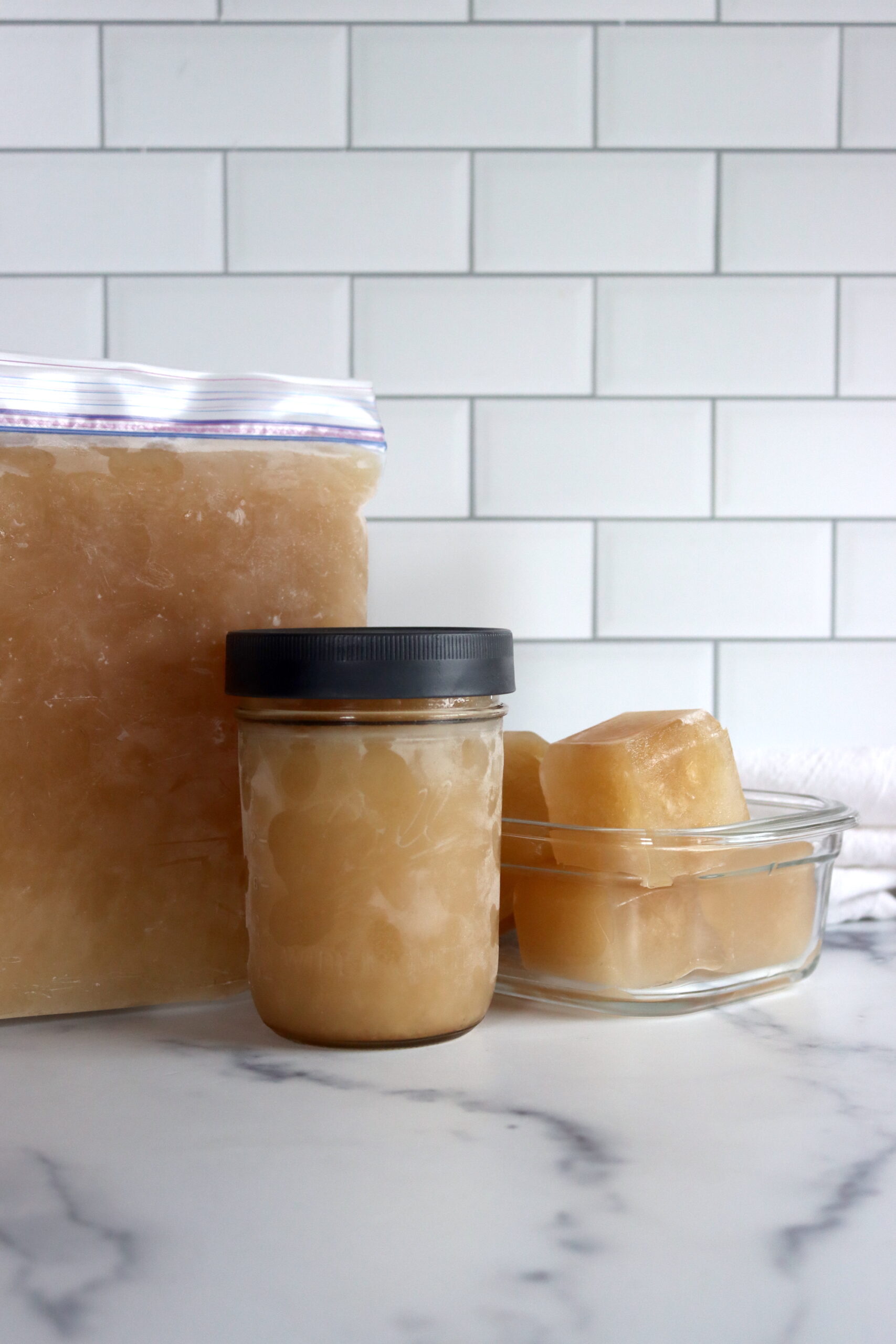
(If you are interested in pressure canning bone broth at home, the process is simple, and all of them have the same processing instructions and times as canning chicken broth. For small batches, I absolutely love my countertop electric pressure canner from Presto. You can see my full review of the presto electric caner on my dedicated canning website, Creative Canning.)
How to Freeze Bone Broth
Since bone broth is a liquid, and there’s often a lot of it, it can be tricky to freeze bone broth efficiently (and without breaking containers in the process).
The trick to freezing bone broth is choosing the right container, and ensuring that the bone broth has cooled to room temperature before storing.
I’ll walk you through 4 options:
- Ice Cube Trays (or Muffin Tins)
- Freezer Storage Bags
- Glass Mason Jars
- Plastic Freezer Safe Containers
Ice Cube Trays or Muffin Tins
The first option is to allow the bone broth to cool to room temperature and then pour it into ice cube trays or muffin tins. This allows you to freeze bone broth in manageable chunks.
Once fully frozen, the bone broth can be packed into freezer-safe bags or containers for long-term storage.
You can pull out just what you need, and leave the rest in the bag. This is the perfect option for small amounts of bone broth, no more than a half gallon or so at a time (unless you have a lot of ice cube trays).
Be aware that adding salt to bone broth before freezing can prevent it from freezing solid, and if you have a lot of salt in your broth it won’t form nice firm cubes. In that case, you’ll want to use one of the other methods below.
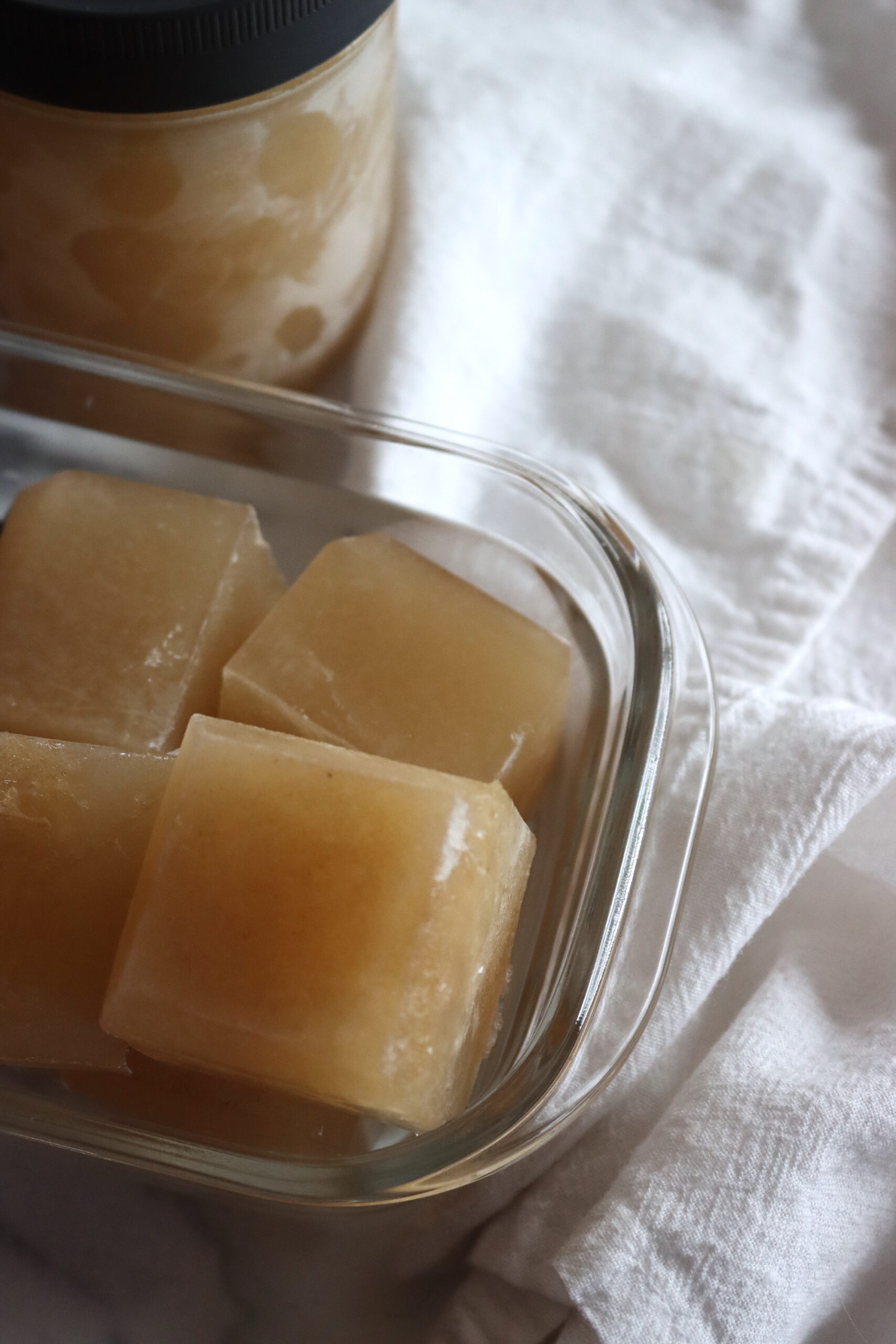
Freezer Storage Bags
The second option is to skip the ice cube trays and just pour the bone broth directly into freeze-safe bags.
In the past, I’ve used Ziploc quart-sized freezer bags because they’re easy to fill and a good quantity for use all at once. You can also use gallon-sized Ziploc freezer bags.
Wait until the broth reaches room temperature, but don’t chill it. If it gels, it’ll be harder to get it into the bags.
Once at room temperature, pour the bone broth into the quart bags. Placing the quart bags into a quart-sized food container (like a plastic takeout tub) or a quart mason jar can help hold the jar open while you fill it.
When filled, squeeze out all the air and seal the bag.
Lay them flat on a baking tray and freeze. This allows them to freeze in slabs, so they stack and store easily in the freezer.
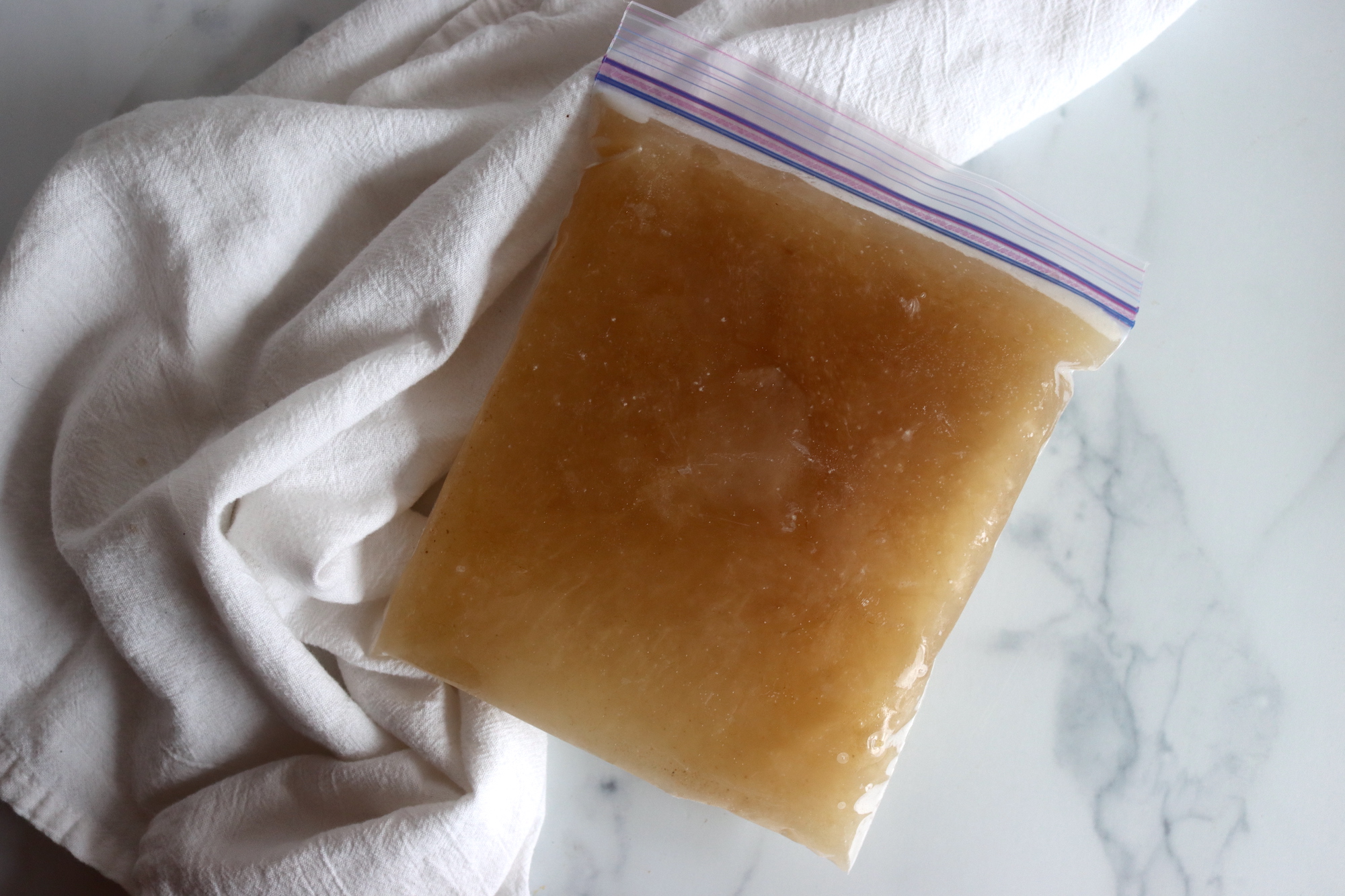
Freezing in Mason Jars
Mason jars are common in kitchens these days, even if you’re not a home canner. While they’re all safe for canning, not all mason jars are safe for freezing.
That’s because some mason jars have “shoulders,” and when the ice inside expands, it pushes up into that shoulder and causes the jar to break.
Only straight-sided mason jars are safe for freezing!
Good examples are:
All have straight sides and work perfectly for freezing.
Simply pour the bone broth into the jar (hot or room temperature), and be sure to leave at least 1” headspace. This allows the broth to expand when it freezes.
Let them cool to room temperature and then place them in the freezer standing up.
Standing up is important, as if you lay down your jars in the freezer, the ice can’t expand “up” into the straight headspace above. When laid down, the top of the liquid in the jar is curved, and when it expands it may pop the jar.
So, to recap, you need:
- Straight sided freezer safe mason jars (without shoulders)
- Freeze the jars solid while standing up, and then store them however (laying down or standing up)
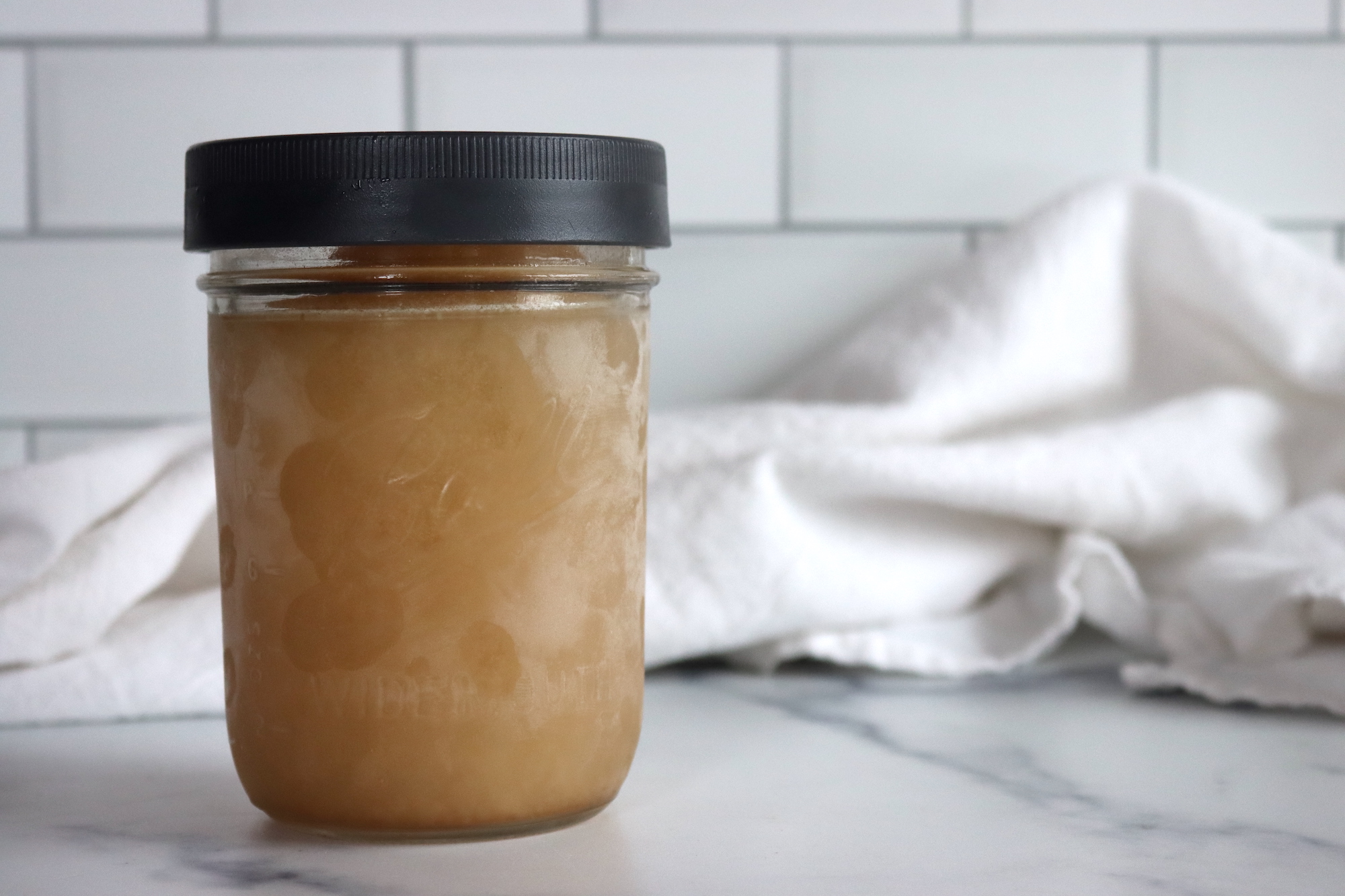
Plastic Freezer Safe Containers
There are a number of freezer-safe plastic containers that are flexible enough not to break in the freezer. These include plastic freezer mason jars from Ball, and many others. If you happen to have those on hand, they work great.
The rules are the same as when working with glass containers, but with one exception.
Bone broth should be room temperature (not hot) when going into freezer-safe plastic containers. They need to freeze standing upright (but then can be stored, however), and they need 1-inch headspace to allow for expansion.
Simple enough.
Ways to Store Bone Broth
Obviously, freezing is one of the best ways to store bone broth at home, simply because just about everyone has a freezer.
The thing is, not everyone has a lot of freezer space, and it can be tricky if you want to make bone broth in big batches.
We used to have a chest freezer that we’d fill completely with bone broth, before I started pressure canning and freeze drying. It worked, but we were always worried about power outages, and it did need constant electricity to stay fresh.
With canning or freeze drying, you can store bone broth right on your pantry shelf and have it there when you need it. Both options have a learning curve, and some upfront costs, but they’re worth it if you’re going to be putting up a good bit of bone broth (or anything else).
To get started, I’d recommend my beginner’s guides:
If you’re just sticking with small batches, or just freezing bone broth after the holidays, then don’t bother. Freezing gets the job done.
Food Preservation Guides
Looking for more ways to preserve food at home?
- Freezing Fruit: A to Z Guide
- Beginner’s Guide to Water Bath Canning
- How to Render Tallow at Home
- How to Render Leaf Lard
- Beginner’s Guide to Cheesemaking
